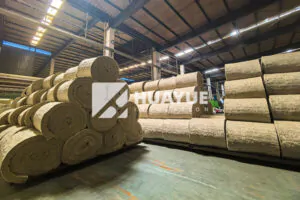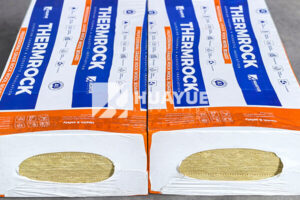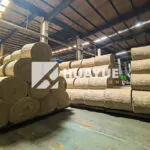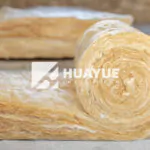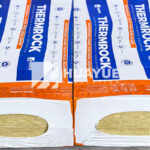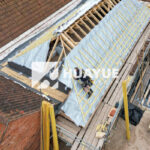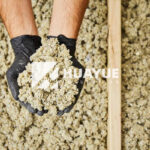What is Rock Wool Made of?
Many people worry about the safety and performance of modern insulation. I often get asked: what is rock wool made of, and how does it impact health and efficiency?
Rock wool is manufactured by melting natural stone, typically basalt or diabase, at high temperatures, then spinning it into fine fibers. This process produces a non-combustible, non-organic insulation material with great durability.
If you are thinking about upgrading your insulation, you may be unsure what rock wool really is and if it’s the right choice. I will break down its composition and answer some common questions so you can make a better decision.
Is Rock Wool Safe for Lungs?
Some plant operators or engineers worry about inhaling rock wool fibers, especially during installation. They want to be sure their team is safe.
Rock wool is considered safe when installed and handled using proper protective equipment. Its fibers are not classified as carcinogenic, but it can cause temporary irritation if inhaled or touched during handling.

Rock wool insulation is formed through a simple process. It starts with melting volcanic rock or slag at very high temperatures. The molten material is spun into fibers, cooled, and then pressed into boards or blankets. During this process, dust or loose fibers may be present. Anyone installing rock wool should wear protective clothes, gloves, and a dust mask. This prevents any irritation or discomfort. Once installed, the fibers are bonded and do not become airborne. There is no long-term lung hazard when the product is undisturbed. Product certifications, such as ISO and CE, require strict safety checks before market entry. This provides extra reassurance for users who prioritize health. If your site requires extra caution, follow local guidelines and maintain good ventilation during installation.
Is Rock Wool Insulation Actually Wool?
Customers sometimes wonder if rock wool insulation uses the same materials as animal wool. They question if it has the natural benefits of wool.
Despite its name, rock wool insulation is not related to animal wool. It uses mineral fibers spun from molten rock or steel slag, not natural wool from sheep or other animals.

Rock wool is a mineral product. The process involves melting basalt or industrial slag, then spinning the material into thin threads. These mineral fibers look somewhat similar to soft wool, but they are entirely inorganic. The term “wool” describes the fibrous structure. It does not indicate the use of animal or organic fibers. Many customers confuse the texture for origin. Rock wool boards and blankets share a texture like wool, but the advantages are mineral-based. This leads to fire resistance, durability, and excellent thermal performance. There is no risk of organic decay or pest infestation as you sometimes have with animal-derived products. The difference between animal wool and rock wool is clear: one is protein based; the other is mineral based. This unique structure improves safety and lifespan in harsh environments. I always recommend clarifying the difference for your team to avoid misunderstandings around maintenance and future upgrades.
Will Mice Chew Through Rock Wool?
Facility managers worry about pest problems. They ask if rock wool insulation is vulnerable to mice, which can damage some insulation materials.
Mice generally avoid chewing rock wool insulation. Its dense mineral composition and lack of organic material make it unappealing to rodents seeking food or nesting.
Many insulation types attract pests, especially when they contain organic material. Mice search for materials they can chew or nest in, which often causes insulation failures. Rock wool blocks this threat. Its mineral base does not provide food or nesting comfort. When I toured several storage sites and spoke to engineers, they often reported little to no rodent activity near rock wool insulation. The structure is dense and abrasive, discouraging typical gnawing behavior. While rodents can sometimes tunnel through very loose insulation types with patience, rock wool resists this problem far better than fiberglass or foam. I also noted that proper sealing and installation help prevent pest entry, regardless of insulation type. Rock wool provides extra peace of mind for facilities concerned with rodent damage and long-term reliability.
What Type of Rock Wool for Soundproofing?
Customers building or upgrading their facilities ask how to select the best rock wool insulation for soundproofing applications.
For soundproofing, use high-density rock wool boards or panels specifically engineered for acoustic absorption. These products reduce noise transfer and improve room comfort.
Soundproofing is essential for many industrial and commercial facilities. The key metric to review is density. High-density rock wool products dampen sound waves and limit transmission from one area to another. When I discuss options with clients, I recommend boards or slabs made for acoustic ceilings, partition walls, and machinery enclosures. These boards are pressed to a higher mass than standard thermal insulation, which lets them absorb more vibration and block airborne sound.
Here’s a simple table to compare common types of rock wool insulation for soundproofing:
| Type | Density (kg/m³) | Sound Absorption | Best Used For |
|---|---|---|---|
| Standard Rock Wool Board | 40-60 | Good | Thermal + Basic Acoustics |
| High-Density Acoustic Board | 80-120 | Excellent | Partitions, ceilings |
| Rock Wool Blanket | 30-50 | Fair | Flexible installation |
All types offer some sound reduction, but the high-density acoustic boards provide the strongest results. I recommend confirming specifications with suppliers before purchase, especially if your site must meet specific decibel requirements or building codes. Proper installation with sealed edges further improves effectiveness.
Conclusion
Rock wool insulation is made from mineral fibers, not animal wool, and delivers reliable performance, fire resistance, and safety for both thermal and soundproofing needs.
You may also be interested in:
Ready to Get Started?
Get in touch with our experts for personalized solutions tailored to your needs.
Get Free QuoteLatest Articles
Let's Work Together
Ready to take your business to the next level? Get in touch with our team of experts and let's discuss how we can help you achieve your goals.
Get Free Solutions
